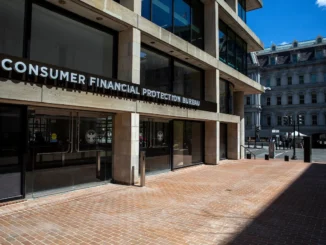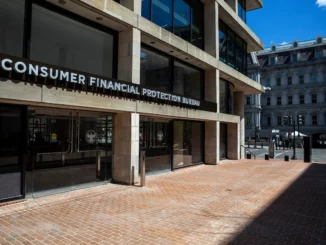
The Consumer Financial Protection Bureau (CFPB) on Friday issued a report indicating that it is taking a closer look at the impact of “discount points” on mortgage transactions, noting that use of the practice has picked up over the past two years with undetermined value for mortgage borrowers.
“The percentage of homebuyers paying discount points roughly doubled from 2021 to 2023,” the report said. “The increase was even greater among borrowers with lower credit scores. While discount points may provide advantages to some borrowers, the financial tradeoffs are complex. The CFPB is monitoring these increases and potential risks to consumers.”
CFPB Director Rohit Chopra added that elevated interest rates are making such a practice more common despite inconclusive benefits for consumers.
“Higher interest rates on mortgages have led borrowers to pay upfront fees to lower their interest payments,” he said. “The heavy use of ‘discount points’ suggests that many borrowers are uncertain about their ability to refinance in the future.”
Serving as a one-time fee paid at closing that allows a borrower access to a lower mortgage interest rate, CFPB notes that such points “have no fixed value in terms of the change in interest rate” and that borrower benefit is highly dependent on how long a borrower maintains a particular mortgage.
The elevated rate environment has made future refinancing options less clear for borrowers entering the market today, but CFPB also expressed concern over the disproportionate application discount points have on borrowers with lower credit scores. Usage of discount points were especially prevalent among low-credit borrowers also using Federal Housing Administration (FHA) lending programs, CFPB said.
The assertions of the report are based on quarterly Home Mortgage Disclosure Act (HMDA) data from 2019 through the first three quarters of 2023, and the prevalence among FHA borrowers with lower credit scores suggests that “lenders may be using discount points to lower borrowers’ monthly payments and debt-to-income ratio, which is one of the measurements lenders use to assess a borrower’s ability to repay in order to qualify for a mortgage,” an announcement of the report’s contents said.
To illustrate that prevalence, the report said that nearly 77% of FHA borrowers with credit scores below 640 purchased discount points, compared with 65% of all FHA borrowers with broader credit profiles.
This is the latest development in the Biden administration’s war on so-called “junk fees,” with the CFPB pointing out a desire to closely monitor the impacts of discount points in a blog post published in early March. The Bureau at that time said that discount points “may not always save borrowers money, however, and may indeed add to borrowers’ costs.”
Marty Green, principal at mortgage law firm Polunsky Beitel Green, suggested that the CFPB report is missing some important details, including the availability of loans without discount points in the market.
“One major consequence of the volatile rate environment over the past two years was that lenders were, at times, not offering an undiscounted rate to applicants,” Green said in a statement provided to HousingWire. “The CFPB references the use of discount points by investors to hedge against increased prepayment risk but doesn’t ‘connect the dots’ to the fact that increased investor demand for upfront fees to the decreased availability of loans without points being offered in the market.”
Green also suggests that Fannie Mae and Freddie Mac‘s early 2023 updates to loan level pricing adjustments (LLPAs) are not being considered in its report.
“The GSEs added LLPAs to additional loan types and credit score bands,” he said. “LLPAs are often passed on to borrowers through points, so it’s only natural to see a greater percentage of borrowers receiving a loan with discount points included. The percentage of borrowers paying discount points will necessarily increase when (a) fewer loan products are offering par rates and (b) the GSEs increase the use of LLPAs to cover additional loan products/borrowers.”



